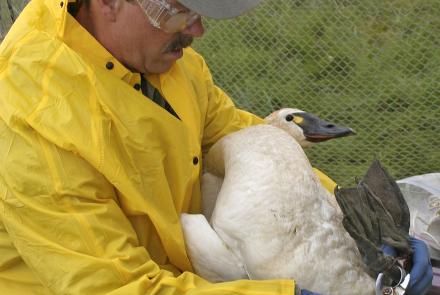Solifluction
Like loose folds of mossy skin hanging down the flanks of sleeping giants, solifluction flows can be seen on the sides of hills of interior Alaska. Travelers along the Steese and Taylor and other highways traversing the upland country can observe these flows, often lobe-shaped on their lower edges.
Solifluction is a slow downward flow of water-saturated soil. It is promoted by the existence of permafrost which traps snow and ice melt within the surface layer making it more fluid. The whole surface layer tends to move together as a cohesive mass.
Another mechanism by which soil moves slowly downhill is creep. Each year as the soil freezes, it is pushed upward perpendicular to the sloping ground surface. When melting occurs in spring, the soil falls vertically downward, thereby ending up slightly farther downhill than where it was the previous fall. In contrast to unitary flow in solifluction, soil creep moves the soil particles individually and thereby tends to mix them up as the creep proceeds.




